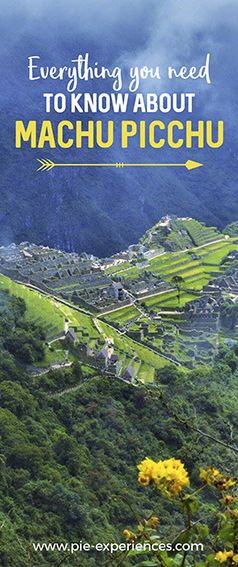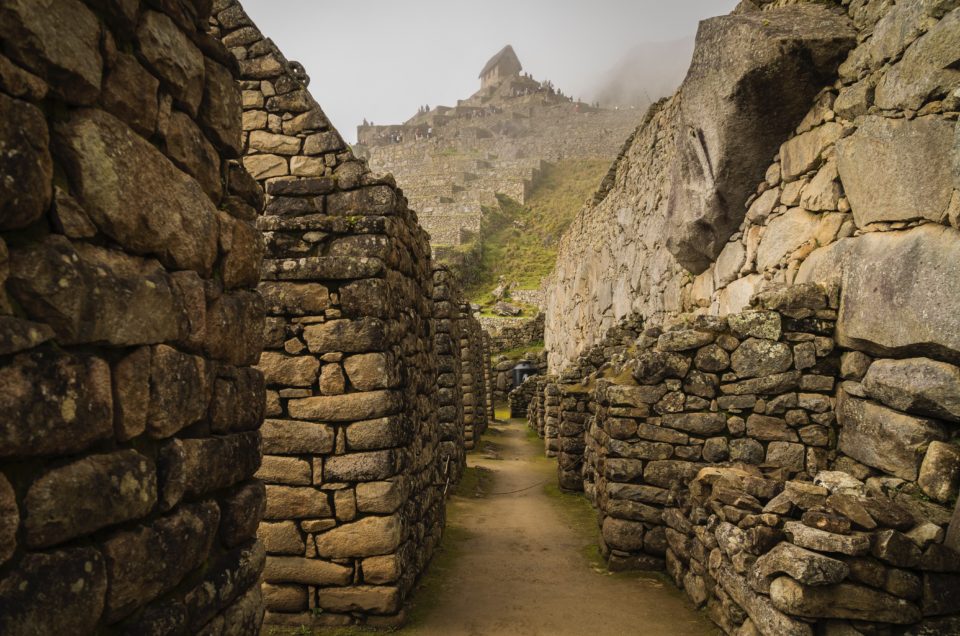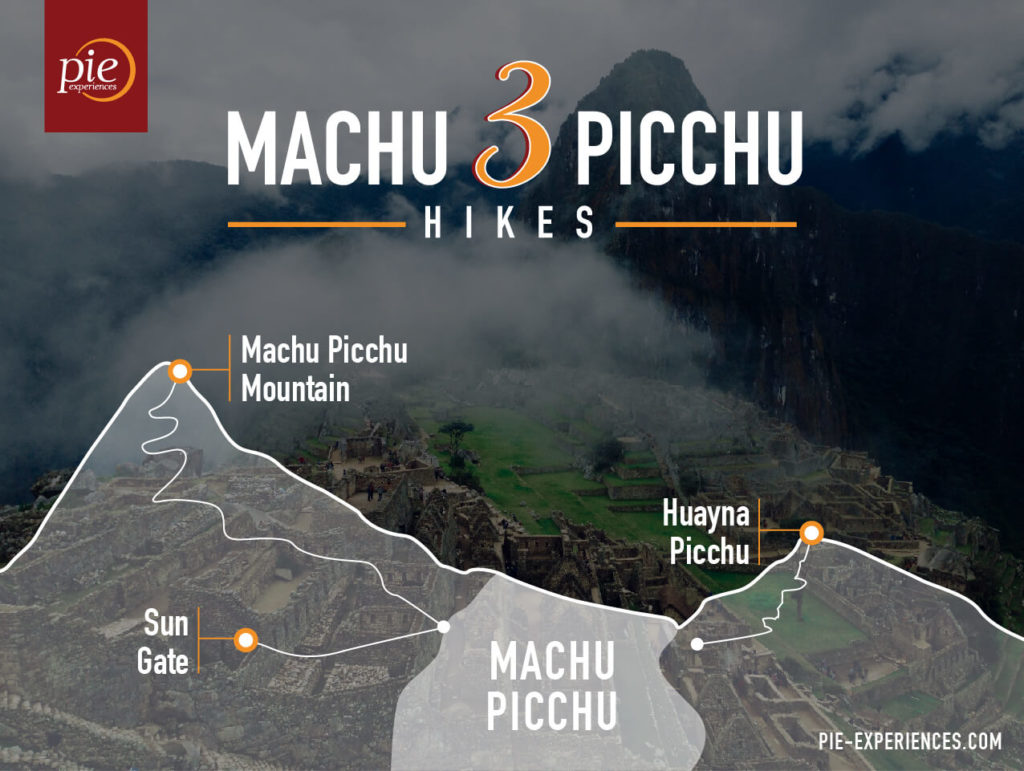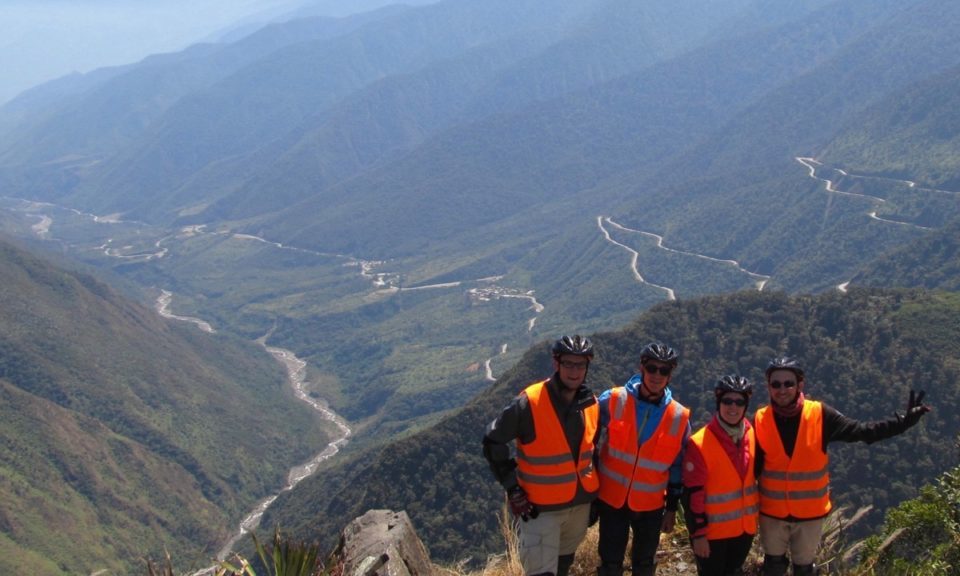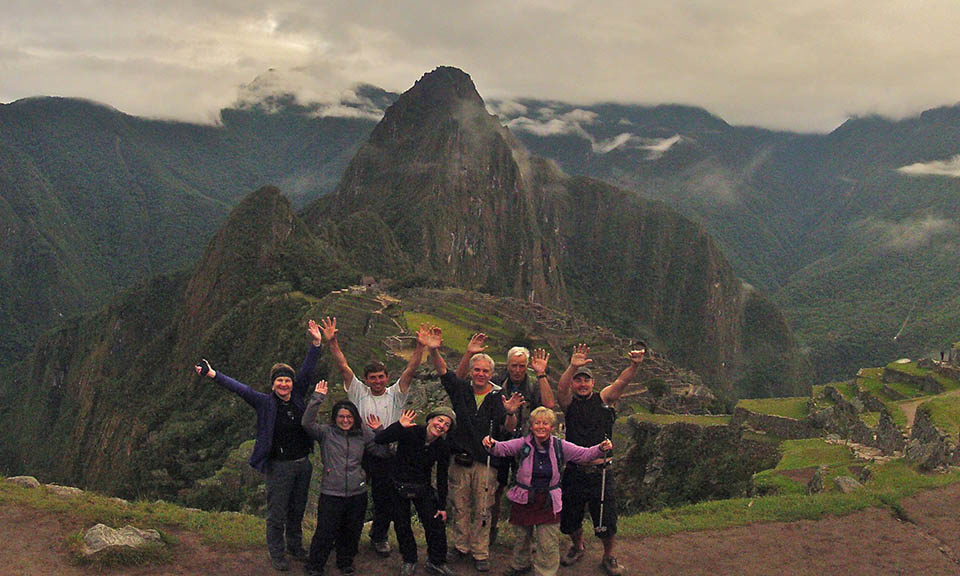When visiting Peru, it’s likely you will be overloaded with all kinds of Machu Picchu facts.
Find out more about this mysterious world heritage site, Machu Picchu, which means ‘old peak’ in Quechua in this detailed blog post.
Best Month to Visit Machu Picchu: Weather, Crowds & Travel Tips
Machu Picchu is a dream destination for many travelers, but choosing the best time to visit can make a huge difference in your experience. While April to October is generally the best period due to dry weather, the top months for an optimal visit are May and September.
Why May and September?
- Great Weather: These months fall within the dry season but avoid the peak of cold nights in June and July.
- Fewer Crowds: Unlike June, July, and August—when Machu Picchu is at its busiest—May and September offer a more relaxed experience.
- Lush Landscapes: After the rainy season, May still has green, vibrant scenery, while September enjoys pleasant temperatures with fewer tourists.
All you need to know about Machu Picchu and the Sacred Valley
Located in the Sacred Valley close to Cusco, in this blog we will give you all the Machu Picchu facts you need.
We will share with you information about the site itself, as well as the various Machu Picchu tours.
In this blog post, find out more about:
- Machu Picchu: Wonder of the World
- Learn where is Machu Picchu
- Machu Picchu elevation
- Machu Picchu weather
- Best time to hike Machu Picchu
- Different options for seeing these famed Inca ruins, including the various Machu Picchu tours
- A bit of history before you go
- There are three peaks: Huayna and Machu picchu
- Things to do in the nearby town of Aguas Calientes
Machu Picchu Facts: One of the seven Wonders of the World
There were seven reputed wonders of the ancient world.
Sadly, one by one, each of the Seven Wonders of the Ancient World were swept away by the tides of history.
Save for one, the first to be built, which lies west of Cairo and can still be visited today.
Three of them were consumed by earthquakes, one by fire, with the Lighthouse of Alexandria the last to succumb.
The Temple of Artemis survived the ravages of the Goths only to perish at the hands of Herostratus, the Greek infamous for burning the temple down just to achieve notoriety.
There still exist today another series of great wonders. Astonishing feats of architecture, engineering and human endeavour that are indeed wondrous to behold.
If you are in India you must visit the Taj Mahal; or China the Great Wall, Europe the Colosseum of Rome.
If you vacation in South America the place to visit it Machu Picchu; the great palace of the Inca, high in the Andes mountain range.
Machu Picchu Facts: Where is Machu Picchu located?
Peru is a land of desert, jungle and mountains.
The Andes mountains run along the spine of the country.
The Machu Picchu ruins are nestled upon a mountain ridge between the Machu Picchu and Huayna Picchu mountains.
Located in the Cusco region, about 80km (50 miles) northwest of Cusco, Peru amid a sprawling ocean of peaks and rivers and valleys.
The ruins eluded the Spanish conquistadors and colonisers for centuries with the help of the local campesinos (farmers).
They remained a mystery not just for their height but their inaccessibility to colonial explorers.
The palace sat near the heart of the Incan empire, at the head of the Sacred Valley.
Accessed only by Incan trails; precisely laid stone paths that navigated the peaks and troughs of the Andean mountains to which the Inca had called home.
 Machu Picchu Facts: How high is Machu Picchu?
Machu Picchu Facts: How high is Machu Picchu?
The ridge the ruins sit upon is 2,429 meters (7,972ft) above sea level; not the highest peak in the region by any stretch.
Even some of the neighbouring towns and settlements are at a higher elevation.
However, at this height (and since most travelers arrive from places which are closer to sea level) there is the possibility of suffering from altitude sickness, also known as acute mountain sickness.
This occurs when one goes from low to high altitudes too quickly.
This is why most people visiting Machu Picchu first travel to Cusco or the Sacred Valley, which are at higher elevations, for a couple of days so their bodies can adapt to the higher altitude and lower oxygen levels (this is called acclimatization).
Machu Picchu Facts: Machu Picchu Weather
Peru is in the Southern Hemisphere, so the seasons here are the opposite of those in the Northern Hemisphere. So winter in the Northern Hemisphere is actually the hottest time in Peru and vice versa.
Unlike some other countries, Peru only has two seasons: the dry season which runs from April to October and the rainy season which runs from November to April.
Dry Season
From April to October, average temperatures range from 20°C (or 68 °F) during the day to 3°C (37°F) at night.
Nighttime temps can get close to freezing, especially in June and July.
The driest month is June and September is the warmest month, on average.
Rainy Season
From November to April, average temperatures range from 19 °C (67 °F) during the day to 6°C (43°F) at night.
January is the coolest month, while January and February are the wettest months.
Rainfall can be intense at times and may cause travel disruptions such as landslides which can impact trains from Ollantaytambo to Aguas Calientes and flight delays or cancellations.
So this should be taken into consideration if you are thinking of traveling during the peak of the rainy season.
Machu Picchu Facts: Best time to hike Machu Picchu
The best time to hike is from April to October with warm (during the daytime) and dry conditions.
Clear blue skies and less clouds means you’ll be more likely to get the iconic Machu Picchu shot.
Conversely, during the rainy season you’ll have to contend with less sunshine, rain showers and cloudy conditions which can obstruct your views of the awe-inspiring site.
Also, intense rains can result in travel delays, which could negatively impact your trip.
If you are planning to do the Inca Trail Trek, some areas (including roads and paths) may be inaccessible or impassable.
And the Classic Inca Trail path is also closed late January to February for maintenance.
So we recommend visiting during the dry season. But you should expect lots of crowds and it is highly recommended to book early!

The famous sungate at Machu Picchu.
Machu Picchu Facts: Trek options
There are a variety of options for taking a vacation in Machu Picchu.
There’s the one-day trip for those with limited time.
There are also multi-day treks through mountains and the jungle which culminate in arrival at Machu Picchu on the final day.
If you choose one of the trek options, then the tour operator will book and arrange the entry ticket to Machu Picchu for you.
 Machu Picchu Facts: Doing it yourself
Machu Picchu Facts: Doing it yourself
It is possible to organise your own trip to travel to Machu Picchu in which case you will need to book your own ticket for the entry.
Only 2500 visitors are permitted a day, between the hours of 6am and 4pm (it closes at 5pm).
Fortunately, the site is open every day including holidays, so when booking your only concern should be availability.
Because tour operators might book up to 40 tickets at a time, it is not uncommon for the day’s availability to suddenly fill up.
On the other hand, tickets can also be booked very frequently for the following day in low season.
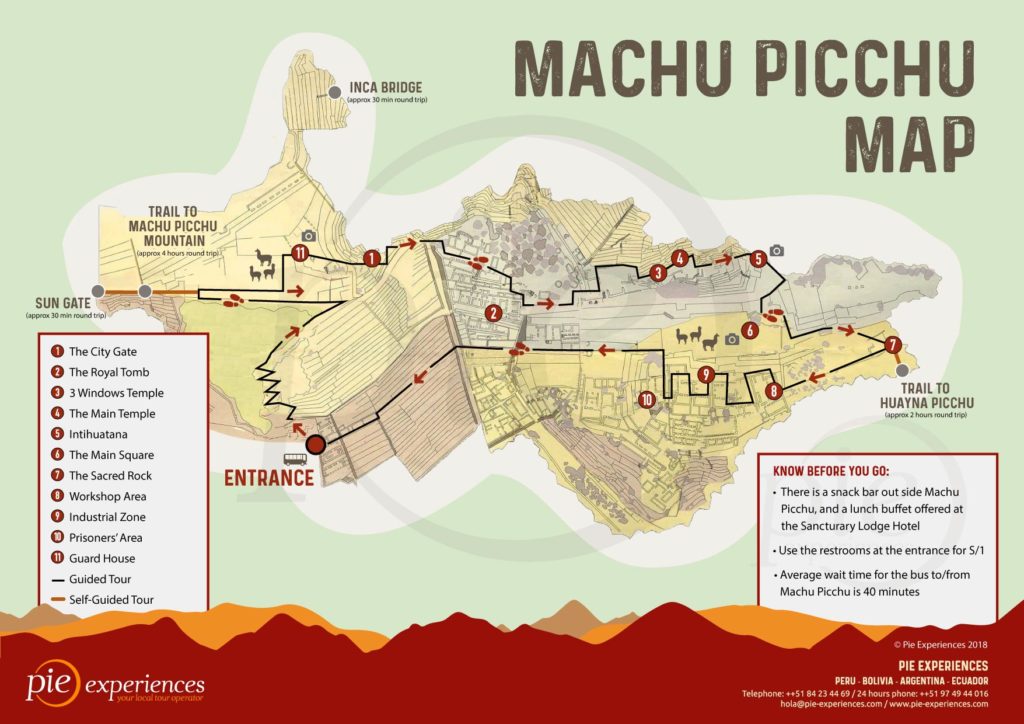
Machu Picchu Facts: Machu Picchu entrance tickets
When booking your tickets to Machu Picchu, you will have a range of options.
If you have a problem buying your entrance ticket to Machu Picchu, please contact us.
Machu Picchu Facts: The various Machu Picchu tours
There is the standard Machu Picchu ticket, which will only give you access to the main ruins.
You have the Machu Picchu + Huayna Picchu ticket, which gives you access to climb the foreboding peak that overlooks the Machu Picchu ruins.
There are two intakes for this ticket; one between 7am-8am and another between 10am-11am, with 200 spaces in each intake per day.
Huayna Picchu is a steep and scary climb not without risk, so be warned; however, the views are spectacular.
We recommend to book this trek three months in advance.
For the slightly more risk-averse hikers, there is Machu Picchu + Mountain ticket, which gives you access to Machu Picchu Mountain, also with spectacular views but easier on the legs and nerves.
Only 400 spaces are available per day, but you will have the famous postcard view of Machu Picchu which is ideal to take those Facebook and Instagram photos.
And there is also the Machu Picchu + Museum ticket, which will give you access to the Citadel of Machu Picchu, Manuel Chavez Ballon Museum and the Botanical Gardens.
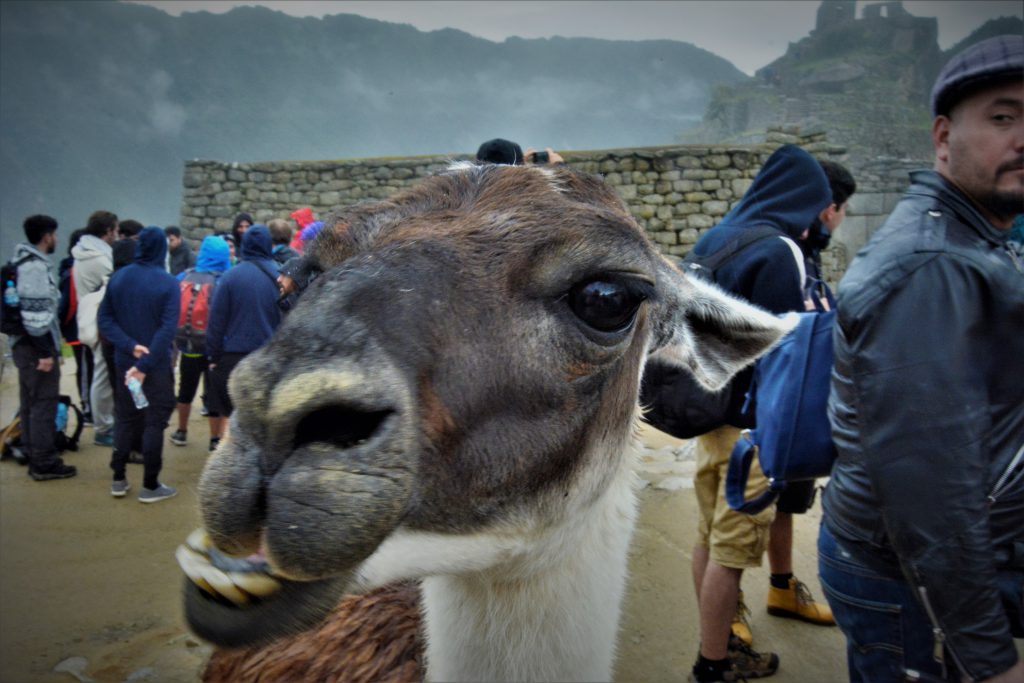
Meet llamas at Machu Picchu.
Machu Pacchu Facts: Getting around
Getting there – How to get from Cusco to Machu Picchu
If you decide to do it all yourself, you’ll need to take a bus to the Incan town of Ollantaybambo, most likely from Cusco.
From Ollantaytambo there is the famous Machu Picchu train which carries you to Aguas Calientes (also known as Machu Picchu Pueblo), the gateway to Machu Picchu.
From Aguas Calientes, you have the option of a steep 90 minute climb (approximately) to the gates of Machu Picchu, or you can take a bus to the top.
Machu Picchu by Bus
Alternatively, a bus can be taken to Hidroelectrica, an unobtrusive hydro-electric power plant nestled in a valley through which the Urubamba river runs.
This is the end point of the train track, and many people walk along the tracks and approach Aguas Calientes from the rear, so to speak.
This walk is about 12km and takes two hours or more.
This option is called Machu Picchu by bus or Machu Picchu by car.
The road from Santa Maria to Santa Teresa is considered one of the most dangerous roads in the world. Not recommended at all!
Machu Picchu by Train
You can take a train to Aguas Calientes from Ollantaytambo.
There are two train companies which service Aguas Calientes, Inca Rail and Peru Rail.
It’s definitely worth looking at both to see which is offering the best deal. Tickets must be booked in advance, at least 11 days and ideally much more.
You can check Machu Picchu information and ticket availability at this website and book your tickets online here.
Machu Picchu Facts: Machu Picchu Tours
Booking Machu Picchu
There are a variety of trek options, offering differing challenge levels, activities and duration.
Most of these treks will also be customizable to meet the desires of the customer.
For example you can shorten or extend the duration while taking in, or skipping specific sites.
Machu Picchu Facts: History
Machu Picchu was rediscovered by Hiram Bingham – the now-famous US anthropologist the train is named after.
Today Machu Picchu is a world-renowned tourist attraction with over two million visitors a year.
Machu Picchu Facts: A Bit of Machu Picchu History to Know before you Go
Unlike the Pyramids, which were built a mind-boggling 4,000 years ago, Machu Picchu is not so ancient in comparison, being a piddling 550 years old, at best guess.
It was the product of a civilisation that did not possess iron or steel, gunpowder, or horses.
It was utterly removed from the European civilisation that is (and was) well known to us.
This mysterious, otherworldly character bestows upon the ruins an air of timeless unknowability.
While the ancient Egyptians are so far removed from us that we can have little hope of understanding their ways, their concerns and their lives, Machu Picchu was built half a millennium ago, less than ten lifetimes ago, by a people whose descendants still live today.
Even the Egyptians had hieroglyphics and were referenced in ancient books, not least the Old Testament (Torah).
There are no written records of what the Inca thought, or got up to day-to-day.
We just have the accounts of the Spanish and the remnants of their incredible stonework and architecture.
Machu Picchu Facts: Spanish Invasion
The Spanish Conquest
The history of the Spanish conquest of the Incan Empire is brutal.
The conquest was treacherous and savage and merciless towards all expressions of the heathen Incan culture and belief system.
All Incan religious symbols were defaced and temples partially or completely demolished and replaced with churches.
Machu Picchu would surely have been in for similar treatment had it been discovered by the Spanish.
The Incan Empire stretched from present-day northern Chile to south Ecuador, touching on territory now belonging to Colombia and Brazil.
Machu Picchu was constructed in 1450, a mere 42 years before the arrival of Columbus.
It was abandoned in 1572, as the time of the Inca was coming to a close.
However, the Inca, despite seeming simple and primitive to their Spanish conquerors, were far from stupid.
Foreseeing the fate that would befall their grand citadel should it be discovered, they destroyed their immaculate trails that led there.
They removed all indication that the place existed to the conquistadors.
They Kept the Secret
Even as nature reclaimed the mountain ridge upon which Machu Picchu sits, the local inhabitants were aware of the existence of such fabulous ruins, but did not share this knowledge with their Spanish overlords.
Despite rumours of its existence and maps appearing with vague references to something known as ‘Machu Picchu’, three hundred and fifty years would pass before a member of the outside world would lay eyes on the grand, leave-choked ruins, and bring knowledge of its existence out of the Andean mountains.
- What Was Machu Picchu For? Top Five Theories Explained
- Best Books about Machu Picchu
- Yale University returns Machu Picchu Artifacs to Peru
When was Machu Picchu discovered -The Rediscovery
This member of the outside world was named Hiram Bingham, a Yale University lecturer from the United States.
Something of an Indiana Jones figure, he led an expedition into the Andes in 1911 in search of the fabled lost capital of the Inca.
Through enlisting the help of local farmers, they discovered a number of Inca ruins, but none fit the description of the Incan city of Vitcos (at the time thought to be the capital of the Incan Empire.)
- Machu Picchu before excavation by National Geographic
- Hiram Bingham re-discovered the ‘lost’ city of the Incas on July 24th, 1911
The Journey
Bingham journeyed down the Urubamba river and came to the foot of Huayna Picchu.
A local farmer told him of excellent ruins atop the steep peak, and led him there.
Little did he realise that he was already venturing upon the outskirts of Machu Picchu.
Atop Huayna Picchu, where today such magnificent views of Machu Picchu prevail, he just saw vegetation.
But a young 11 year old boy led them down the ridge to the ruins proper, and Bingham began to dimly perceive that he had made a find.
But even then it wasn’t clear that he had found the fabled ruins of Machu Picchu, due to the extensive vegetation and undergrowth which had taken over what was left of the citadel.
Uniquely different
Ultimately, it was the incredible stonework which set Machu Picchu apart from other Inca ruins.
Bingham returned in the following years to lead excavations and restorations of the site, and its fame and merit as a tourist attraction grew from there.
Nonetheless, even in 2000 only 400,000 visitors made it to explore the site each year.
Since then tourist developments and commercial forces have developed the site, sometimes at the expense of authenticity.
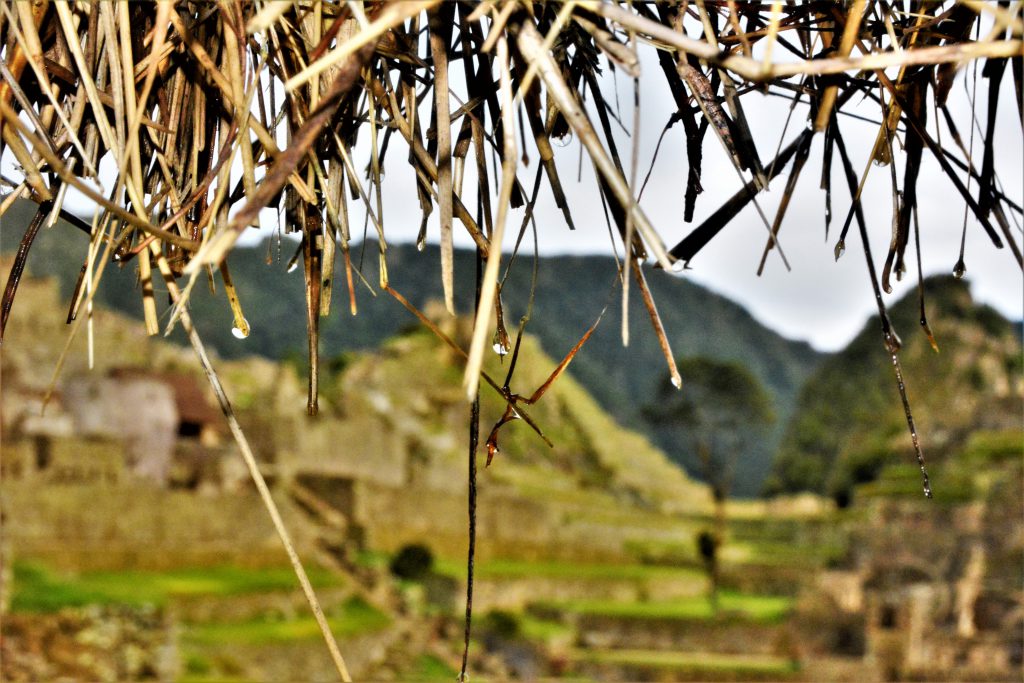
More important Machu Picchu Facts:
There are three mountain peaks: Huayna Picchu, Machu Picchu Mountain (and Putucusi Mountain)
As detailed above, there are two mountain peaks that you can explore as part of a day trip to Machu Picchu.
It is typical to arrive at the gates either at 6am when they open, and be part of the first wave, or to arrive a little later, at a more leisurely time by bus.
Because of these two waves, there are generally two time slots in which you can hike one of these two mountains, depending on what time you arrive at the site.
Note that it is not possible to climb them both (in the same day) and each one requires a ticket purchased with your Machu Picchu ticket.
Machu Picchu Facts: What can you do at the top of Machu Picchu?
Huayna Picchu or Wayna Picchu

Machu Picchu ruins and Huayna Picchu.
This is the peak which overlooks Machu Picchu.
The peak of Huayna Picchu is 2,693 metres (8,835 ft) above sea level, or about 260 metres (850 ft) higher than Machu Picchu.
The Inca built a trail leading to a temple at the top.
The gate opens at 7am and 10am (pre-bought ticket required. Only 200 for each time slot).
You will ascend on the original Inca trail, let’s not forget the Inca built over 500 years ago and without modern health and safety concerns in mind.
The Inca who climbed this trail were climbing similar trails all their lives.
At points the path is so steep and narrow that hikers must pull themselves along on a steel cable attached to the rock.
It is tough going and not without risk, so common sense is needed.
Anyone with reasonable physical fitness will be able to tackle this peak.
And the rewards at the top are well worth it.
At the peak was the residence of the lucky high priest and the local virgins, whose purpose is unclear.
The Temple of the Moon, found by following the lower trail, is the main archaeological attraction of Huayna Picchu.
Machu Picchu Mountain (Montaña)
Actually higher than Huayna Picchu, at 3,050m (10,007ft), it is something of the ugly stepchild to its more illustrious counterpart.
While Huayna Picchu is included towering over Machu Picchu in most postcard pictures, Machu Picchu Mountain is less spectacularly visible from Machu Picchu and thus more overlooked.
But the views are just as incredible and the trail is generally less busy.
It is fairly leisurely at first, but it does get more challenging as you approach the summit.
Less terrifying than Huayna Picchu, but not necessarily easier.
Putucusi Mountain
This is a little known secret peak around Machu Picchu that does not require a ticket, pre-booking or even queueing.
The trail head is not located within the Machu Picchu site, but is found at the foot of the mountain near Aguas Calientes.
It is not clearly marked, starting near the train tracks behind the Sumaq hotel, with a sign “zone in process of conservation – restricted area”.
The hike itself is challenging, with many questionable wooden ladders throughout the hike.
It will take approximately 90 minutes to the top and is not suitable for your grandmother or even your mother.
 Why Machu Picchu Mountain (Montaña) is better than Huayna Picchu or Wayna Picchu
Why Machu Picchu Mountain (Montaña) is better than Huayna Picchu or Wayna Picchu
This is a common debate between travellers.
Macchu Picchu is the more ‘famous’ of the two mountains, while Huayna Picchu is essentially the little sister of Macchu Picchu – where people might climb to get a better view of Macchu Picchu.
Huayna Picchu is the little mountain you see behind the ruins in all the classic shots of Machu Picchu.
With two options a day available (one from 7-8 am and the other is 10-11 am) there is a limit of 200 people per day.
Huayna Picchu is about 1,000ft to the summit – and can be reached in 30 minutes or less if you are fit and acclimatized, although it is more challenging than Macchu Picchu.
It does get more challenging the closer you get to the top – you may have to use ropes built into the rocks to help you make it to the top.
There is a loop at the top that includes a walk through a tiny cave which then reunites with the original path for the descent back to checkpoint.
The average time take to climb Huanya Picchu is approximately 1.5 to 2 hours.
• More Machu Picchu Facts •
What to do in Machu Picchu / Aguas Calientes
So what can you do in Aquas Calientes (Machu Picchu Pueblo)?
Anyone heading to Machu Picchu, whether on a Machu Picchu tour or just on their own, will pass through Aguas Calientes.
This mountain town sprung up before Hiram Bingham’s discovery.
However, it exists mostly to service visitors to Machu Picchu.
As you can imagine, it is mostly a collection of hotels and restaurants.
The prices are largely divorced from the reality of the Peruvian economy.
It sits astride a tumbling creek that feeds into the Urubamba River and is the central transit point for an impressive and romantic mountain trainline.
Although most use it merely as a place to sleep (and only spend one night in Aguas Calientes before ascending Machu Picchu), it does in fact have some charms of its own.
This museum delivers some incredible Machu Picchu information.
We highly recommend that you visit it before visiting the ruins themselves.
Here you will find exhibits for all variety of treasures and artefacts relating to Machu Picchu and find even more Machu Picchu information about the Incas and their civilisation.
It is quite a grave mistake to go all the way to Machu Picchu and not study up on your homework about it beforehand.
Next-door is a botanical gardens, too – very nice.
There are 8 species of butterfly that live around Machu Picchu.
Here you can see them and learn all about their life cycles.
Really quite a nice and pleasant experience, but perhaps not for those pressed for time.
- The Orchid Garden
Another flora-based attraction.
This one is even farther off the beaten track and rarely visited by many of the 2 million annual visitors.
The gardens take you on a self-guided tour which takes about 30-40 minutes.
It is a very peaceful and enjoyable way to pass some time away from the crowd.
The phrase ‘aguas calientes’ in Spanish directly translates as ‘hot waters’, but a better translation would indeed be ‘hot springs’.
These are the thermal baths for which the town was named.
For that reason alone they merit a visit, time permitting.
Plus the view is incredible.
Floods destroyed the original baths in the not too distant past.
But they have rebuilt them, and they can be found at the uppermost end of the town.
Just keep walking uphill.
It is open 5am-8pm and the admittance is around $3USD (10 soles).
-
Ziplining in Santa Teresa
This is a bit of a cheat, since it’s not in Aguas Calientes and not an activity easy to do if based in Aguas Calientes.
But it’s such a rip-roaring adventure that it’s worth mentioning here.
You can spend your morning careering across a valley attached to steel cables and traversing extremely unstable wire bridges with a raging river below.
Ideally, you do this the day before ascending to Machu Picchu.
This is because getting between Aguas Calientes and Santa Teresa involves either a train or a two hour hike.
Best done as part of the Inca Jungle Tour.
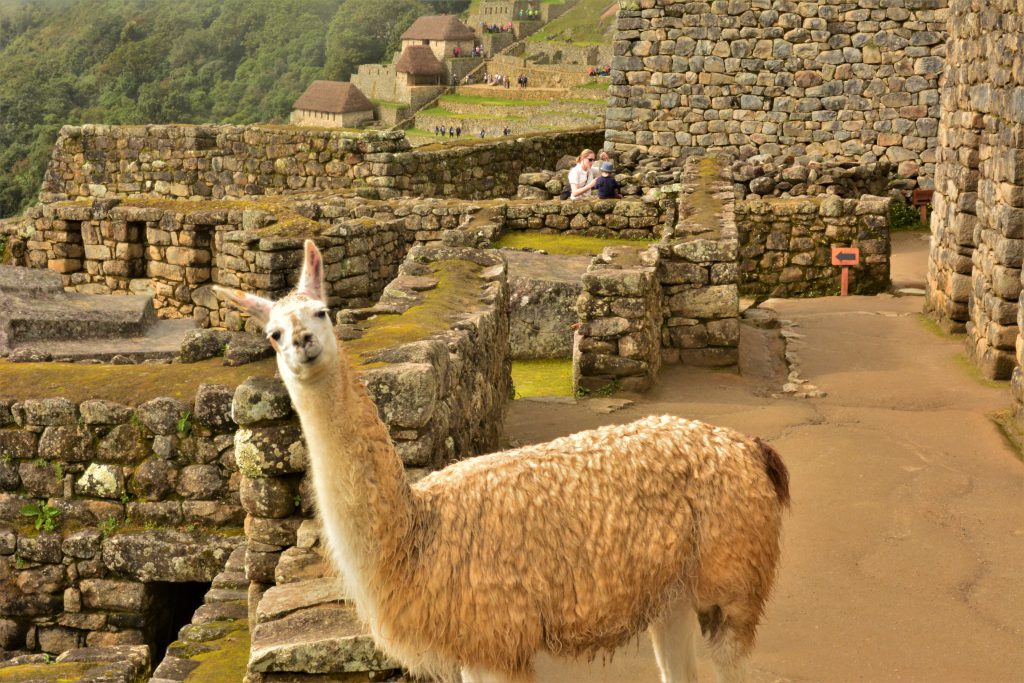
Curious llama at Machu Picchu.
Machu Picchu facts overload
So now you have all the Machu Picchu facts and information about Machu Picchu tours and Aguas Calientes (Machu Picchu Pueblo).
There is now nothing you do not know.
OK, that might not be true.
There is more to find out than in this blog post.
But it’s a very good and helpful start.
There are so many options for getting there, so many optional activities, so many hikes and treks and routes.
We hope that this article begins the process of demystifying some of it for you.
In addition to the practical Machu Picchu facts, make sure you read up on the history of the ruins to make the most of your trip.
Pin this post!
